Learn more about Penetrating Damp
Penetrating Damp can occur in both old and new houses. However, the building techniques used to build pre-1920s houses can often lead to more challenges with dampness.
Damp and condensation can occur for a number of reasons and in this guide, we are going to help you identify penetrating damp and learn how to fix it.
Often a number of fixes can be put in place to stop the problem before seeking more costly solutions.
What is penetrating damp?
Penetrating damp is the name given to dampness that occurs when moisture from the exterior of the building moves into the interior wall.
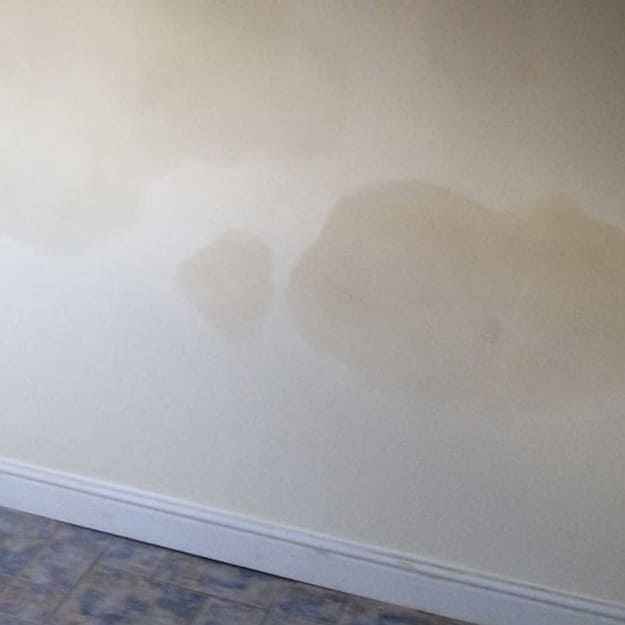
The brickwork on our homes takes a lot of punishment from the wind, rain and cold over the years. Small bits of damage can begin to take a toll and lead to increased levels of moisture within the bricks. Even small cracks or defects can allow water to ingress and penetrate into the interior walls of the house.
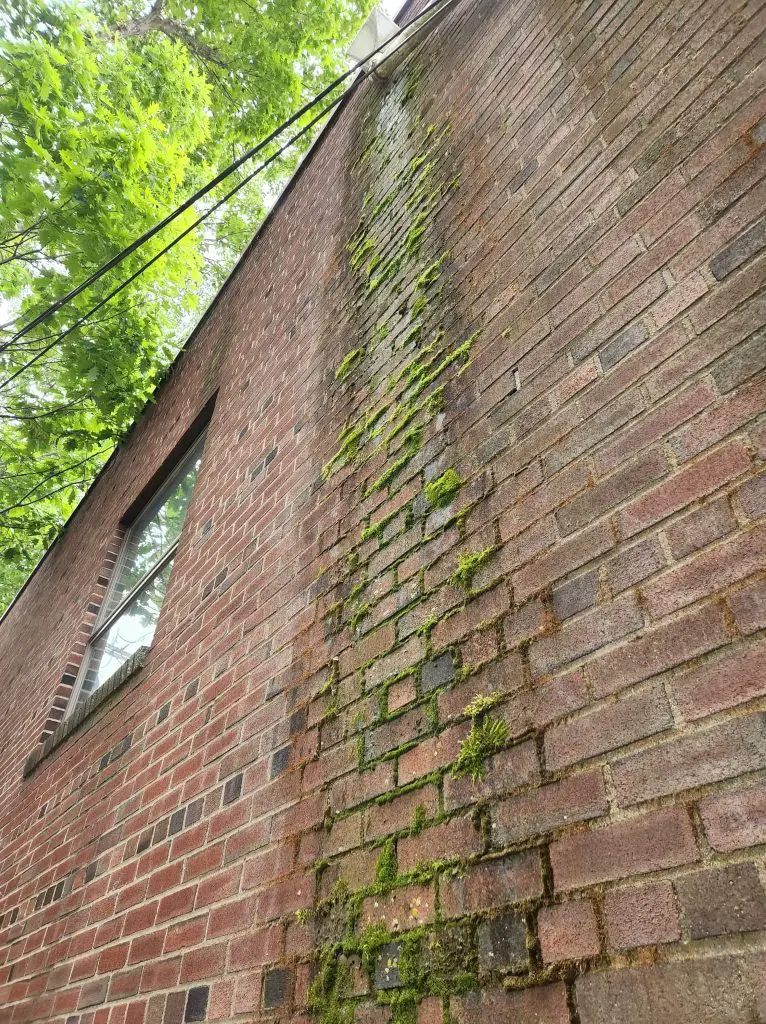
Although more common in homes constructed with single masonry walls, penetrating damp also affects newer homes with cavity walls if wall ties or insulation have been poorly installed.
Penetrating damp signs
Penetrating damp in old houses is unfortunately all too common. There are, however, a few telltale signs which can help you diagnose penetrating damp and not confuse it with condensation which is also a common problem in older homes.
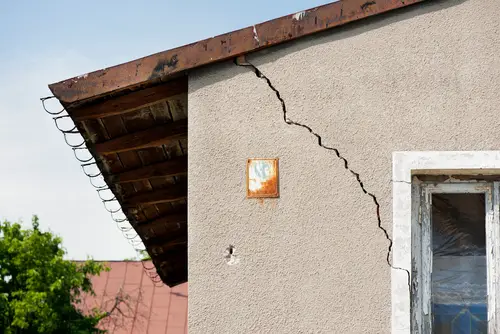
The most apparent sign of penetrating damp is wet marks on the wall. These marks may occur in random places across your walls, which is a sign of water penetrating through your external walls.
For more extreme issues they may also be accompanied by drips or puddles of water if there is a large breach allowing water to ingress.
Wet or crumbly plaster is another tell tail sign of moisture inside of your walls. You will begin to see patches where your paintwork is darker in places, which is another sign of moisture penetration.
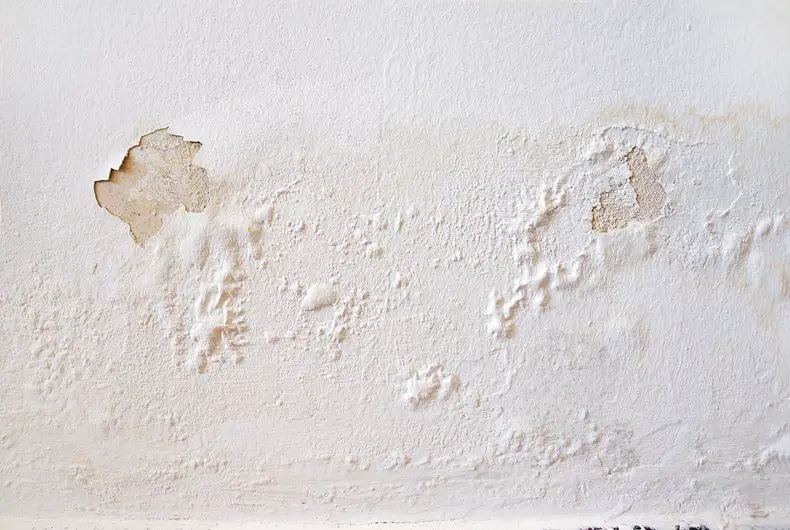
Scattered patches of mould spores are another sign that water has breached the wall, as mould begins to thrive in the moisture.
Older homes can also be prone to condensation, which is easily confused with penetrating damp. Check out our treating rising damp in old houses guide for more information on how to manage condensation in a period property.
The easiest to identify the source of the dampness in your home is via a process of elimination.
Penetrating damp causes
Penetrating damp in old and new houses can generally be identified by surveying the exterior of your home.
Due to the nature of penetrating damp, it is often caused by water flowing into your home via a defect or issue with your property’s exterior.
Use the checklist below to get to the bottom of your penetrating damp issues.
- Roof Damage – water is particularly good at finding its way into small cracks and your roof is particularly susceptible. Check for missing or damaged tiles which are a prime candidate if you have penetrating damp on your ceiling areas.
- Guttering and Drains – any blocked or broken drains which cause water to cascade or pool are also problem areas that should be addressed. It could be a broken pipe or a blockage that is causing your gutter to not work as intended. Sometimes a fix can simply be unblocking to avoid concentrations of water flowing down your walls.
- Brickwork – ageing bricks or broken pointing can give water the small crack it needs to ingress into your walls. Additionally, vegetation such as moss can also damage brickwork allowing moisture to seep through. By giving your brickwork a thorough inspection and repair if necessary you can avoid moisture migration.
- Concrete Render – houses that have been rendered can often suffer from cracks that enable water to get in behind the render. This makes it very easy for water to pool behind the render and absorb into your walls.
- Window & Doorframes – cracks in door or window frames are also an area to check to ensure they are in good working order and sealed against the elements.
- Internal leaks – leaky pipes internally can cause major dampness issues if left over long periods of time.
How to fix penetrating damp
The first step in fixing penetrating damp in old houses is to find the source where the water is getting into your home. In order to have a warm and dry home it is important to ensure your house has a water-tight seal against the elements.
Use our checklist above to inspect the key areas that might lead to damp penetrating into your walls.
Once you have identified where water is getting into your home you can then go about fixing the problem. Often the fix is small and simple such as fixing a broken gutter or cracked doorframe. In some instances, however, it may require larger jobs and professional help in order to fix.
After the penetrating damp source has been fixed it’s important to let the walls dry and breathe. Sometimes to help with this process it is beneficial to use a dehumidifier to remove excess moisture from the air.
In older homes with single masonry walls, you should also manage the condensation within your home and ensure your walls are able to breathe properly. View our full guide to learn more about condensation dampness.
In time once the excess moisture has evaporated from the wall and the source of penetrating damp has been fixed you should be able to enjoy warm and dry walls within your home, a welcome sight no doubt for many stressed homeowners.
Will rendering stop penetrating damp?
Unfortunately, rendering on old house can cause a number of issues with dampenss. Firstly, if you concrete over the breathable walls of an older house, you disrupt the design and the way the house deals with moisture. This can lead people to believe they have issues with rising damp. Please see our full guide on diagnosing and managing rising damp.
Secondly rendering will only temporarily stop water and moisture getting inside a building. If the source of the penetrating damp has not been fixed it in will likely only lead to further on-going problems.
Unfortunately, penetrating damp is only one specific form of dampness. View our full guide on fixing damp in old houses for further information.
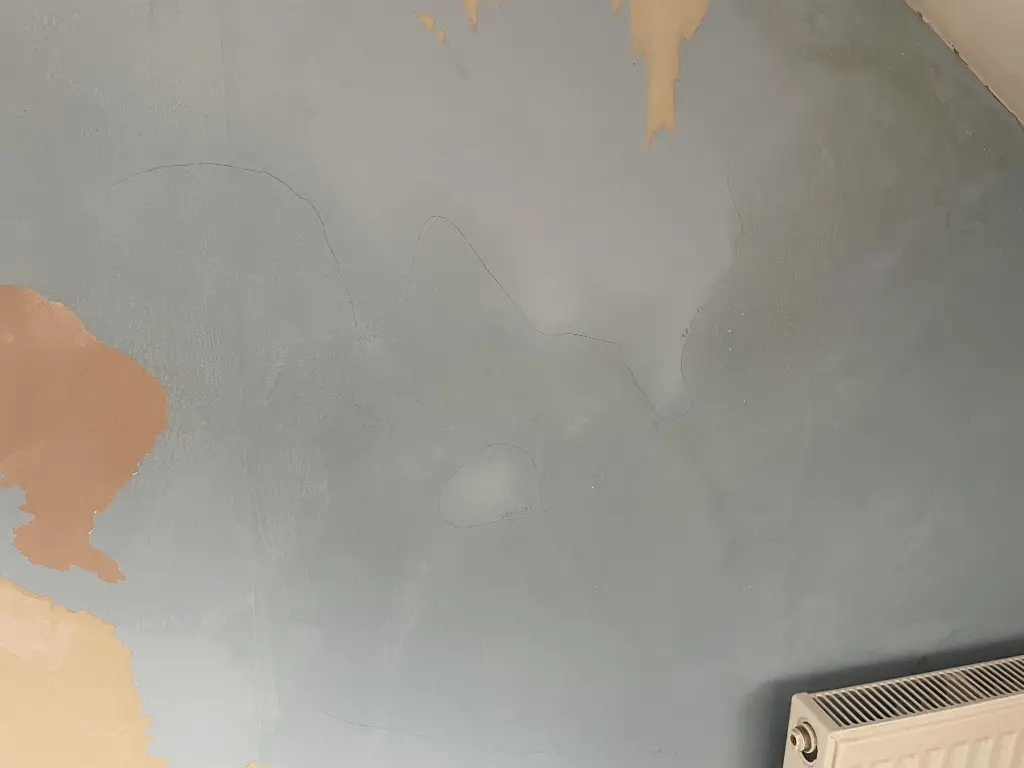

Leave a Reply